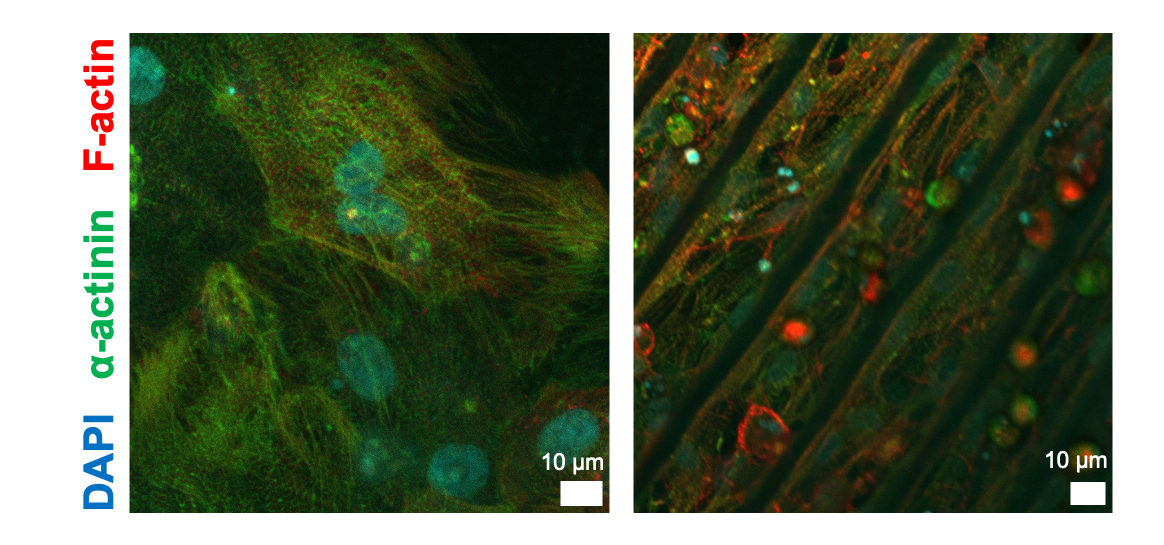Researchers Develop Bioinspired Technology that Stimulates Cardiac Cells with Light

Sept. 11, 2025 – UC Irvine chemical and biomolecular engineering researchers are engineering biomolecules that can help grow light-sensitive heart muscle cells in the laboratory. The development enables a biotechnology that could deliver light-triggered signals to the heart, improving its function, without requiring genetic modifications or invasive procedures.
“We show for the first time, that light can be converted into cardiac stimulatory cues, with synthetic materials made of biomolecules,” said Herdeline Ann Ardoña, assistant professor of chemical and biomolecular engineering. “This can be beneficial for downstream medical applications, such as in cardiac pacemaking technologies, or helping direct therapeutic patient-derived stem cells to better mimic adult heart cell features.”
The findings are reported in the journal Proceedings of the National Academy of Sciences USA (PNAS). The paper’s co-first authors are recent Ph.D. graduate Sujeung Lim, and Ze-Fan Yao, previous postdoctoral scholar in the Ardoña Research Group. The researchers explain that currently several synthetic soft biomaterials already exist that are used to provide support in recreating heart tissues in a laboratory setting. However, many only offer passive support to growing tissue. This new material system provides both structural support and active signals initiated by light irradiation to deliver cues that impact cardiac behavior.

“When exposed to specific wavelengths of light, local electrical signals can be generated at the interface between biomolecules (peptides) and cells, guiding the cells to contract more rhythmically and for stem cell-derived cells to express more cardiac-like features,” said Ardoña. By using peptides to deliver light-triggered stimuli, the properties of the material and the way they interact with cells can be systematically tuned based on the sequence of amino acids.
The technology can help researchers better understand disease mechanisms as it aids in lab-grown models of the heart that more closely mimic human cardiac features. Ardoña and her team will continue investigating the mechanism behind how cells respond to the particular stimuli delivered by her group’s engineered biomolecules. They’re also working toward creation of 3D-engineered cardiac tissues that demonstrate the same light sensitivity.
The research was supported by the National Heart, Lung, and Blood Institute (NHLBI) of the NIH.
– Lori Brandt
